As the Germans are looking for soldiers of the Second World War
Erwin Kowalke tells German television about the fate of people in the trench they are digging
On the territory of present-day Germany and Poland, as well as a number of countries in Eastern Europe, lies in the ground no less than 1,2 of a million German soldiers of World War II who are reported missing after fighting in these places. German pensioner Erwin Kowalke and his assistant Joachim Kozlowski from Volksbund Deutsche Kriegsgräberfürsorge (VDK) have been searching for the remains of fallen soldiers for many years, identifying them and burying them in cemeteries.
Volksbund Deutsche Kriegsgräberfürsorge (VDK) - The People’s Association for the search, identification and burial of dead soldiers in Germany was created in 1919 year. Since Germany was an active participant in both world wars, there is no shortage of work for employees of the organization (there are only a few hundred people, except for volunteers).
The remains of German soldiers in special sarcophagi
He started working at VDK in Kovalka back in 1980 year, and now he collaborates with her as an independent expert. For three decades, he has become one of the leading experts in this field. At Kowalka himself, his father died in France in 1944, and he believes that the war will end only when the last soldier is buried. In the GDR, where he lived, all the soldiers of the Wehrmacht were considered criminals, and therefore no one was interested in the search and identification of the dead soldiers. The enthusiasts conducted excavations at their own risk and risk - as a rule, under the “roof” of various church organizations that supported the VDK.
Every year, Kowalka helps identify hundreds of German soldiers.
Since 1990, after the collapse of the communist regime and the absorption of the GDR, Erwin Kowalka and his colleagues were able to begin full-scale work, primarily in the area between Berlin and the current German-Polish border. Here, according to their most modest estimates, about 120-150 thousands of people who fell in a matter of days lie unburied. Only on the Seelow Heights, from where Soviet troops began an immediate assault on Berlin, lies in the ground to 50 thousands of unidentified soldiers and officers. About a third are Germans, the rest are Soviet and Polish soldiers. On average here on 1 the unburied German soldier is accounted for by 2-3 Soviet.
The second place of large mass graves of unidentified remains is the Halbe cauldron on the Oder, where in April 1945, Soviet troops surrounded parts of the German 9th Army and 4th Army, battered at the Zeelovsky Heights, tank army.
Not only dead soldiers are buried in special sarcophagi, but also the remains of dead civilians.
According to eyewitnesses, the battles that were monstrous by intensity (the Germans themselves compared them to Stalingrad) were here, though no one actually considered losses in this battle. According to German researchers, up to 60-80 there are thousands of soldiers and officers in the land, half of whom are Germans. For example, only in 1993, the search engines dug around 8 thousands of people here, then, however, the rate slowed down, but every year Halbe "gives" several hundred people.
Soldier Kowalke is often looking for with a metal detector - as experience shows, quite a lot of metal remains next to fallen soldiers: weapon, helmets, etc. items. Finds come and call: the bones and rusty weapons are found during construction work. Sometimes locals also help, who have preserved their memories of the graves or buried trenches in which the soldiers lay.
Found another Wehrmacht soldier
In the VDK service, Kowalka is considered one of the “champions” - over the past 20 years he has “dug up” about 30 thousands of soldiers and officers. In total, annually in Germany and Eastern European countries (first of all, in Russia, Ukraine, Belarus, Poland) with the participation of the VDK are exhumed and sent for identification up to 35-45 thousands of servicemen who died during the Second World War (in 2010 - more than 46 thousand, in 2009 year - over 42 thousand). For comparison, in the territory of Belgium, France, the Netherlands, only a few dozen Wehrmacht servicemen are now exhumed now — the rest are already identified and buried in the soldiers' cemeteries. In Eastern Europe, since 1992, thousands of German soldiers have been reburied and identified on the built cemeteries and identified 574 (not counting those whose identification has not yet been established).
In 1989, in the GDR, army soldiers were recruited to search and exhume the dead
Since the end of the war in 1945, thanks to enthusiasts, as well as the VDK (it legally operated in West Germany, in the GDR - unofficially), the personal fate of 3,2 millions of Wehrmacht, Luftwaffe, Krigsmarine, and paramilitary forces of the Third Reich, who were considered pro-WrK, who were considered pro-WrK, were considered prosecutors. missing or dead.
German search engines and VDK began work in Eastern Europe and the former Soviet republics after 1991. In Russia, the creation of German soldiers' cemeteries was allowed under Boris Yeltsin, despite the resistance of the communists and the native patriots.
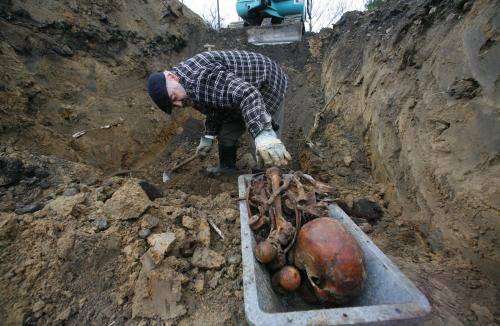
Thanks to this titanic work, the military losses of Germany in the Second World War are generally known at a good evidentiary level (if we talk about a defeated and destroyed state). For comparison, in Russia before the beginning of the 90 of the last century, there was no statistics on casualties during the Second World War (total loss figures with an accuracy of millions, each time increasing, were lowered by the communist authorities from above), and the activities of search teams were until the end of the 80 of the last century is essentially prohibited. You can learn more about how things are in this situation in the Russian Federation right here.
To identify the remains found, Kowalka and his colleagues approach with German thoroughness. For each "find" and reburial a separate act is drawn up, in which all the details are indicated. Sometimes the remains of German soldiers are found in the graves of soldiers of the Red Army.
The German Wehrmacht Information Service (Deutsche Dienststelle der ehemaligen Wehrmachtsauskunftsstelle (WASt)) carefully collects all material finds from excavation sites — personal tokens, documents, award badges, badges, medals, coins, etc. things. Things are documented, acts are drawn up, which subsequently help in identifying the remains of those Wehrmacht soldiers who did not have any tokens. All finds are stored in a special storage in Berlin.
The German state represented by the Ministry of Defense, as well as private and corporate donors, fully pay for the search, identification and burial of fallen soldiers and officers of the Third Reich. Every year, Germany spends up to several tens of millions of euros for this purpose only (without taking into account the maintenance of military monuments and cemeteries) (the VDK budget is about 13-14 million euros per year). However, the lion’s share of work is done by volunteers who don’t get any money for it.
It looks like the WASt archive with card files for each Wehrmacht soldier.
The greatest difficulties for the German services for the identification of soldiers of the Wehrmacht arise with those who died in the 1945 year. The reason is the loss or destruction of the lists of military personnel, so the data for this period are of the greatest value for searchers. In 2010, from 92, German soldiers and officers excavated by Kowalka in one trench, for example, only 28 was identified. For the rest of the archivists to sweat.
As a rule, in most cases, search engines can avoid confusion with the accessories of the remains.
- This is a German, about 20 years, hardly more, - says Erwin Kowalka, pointing to the preserved jaw. - But these remains belong to the Russian soldier, about the same age as the German. By the way, in 90% of cases, it is possible to correctly identify the belonging of soldiers immediately to the teeth - the Germans have teeth that are less hewn than those of the Russians. Affects the difference in the type of food and dental care.
A great help in identifying the dead - soldier tokens. Thanks to them, they manage to establish the name and surname of the serviceman, as well as the military unit in which the deceased served.
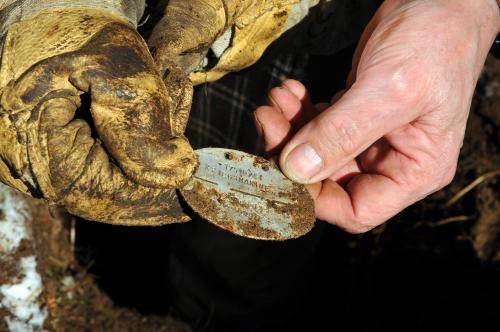
The biggest fear of a search engine is not to find all the soldiers who fell in that war. The war will end when all soldiers are buried in an appropriate manner, he says. Therefore, Erwin Kowalke tries, and the rows of graves at the soldiers' cemetery Halbe (created back in 1951) are growing.
The remains of the dead Soviet and Polish soldiers are sent to military cemeteries, where soldiers from the USSR and Polish units are buried. All data on the found soldiers are sent to Russia or Poland. However, the identification of Soviet remains is extremely difficult, since the personal tokens were not relied upon by the soldiers of Stalin’s army (unlike the soldiers of the army of Tsarist Russia), which, accordingly, makes it difficult to personally register the dead. According to German search engines, finding the remains of Soviet soldiers with any serious identification information is a rarity.
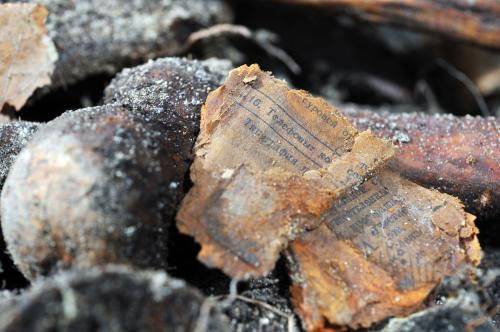
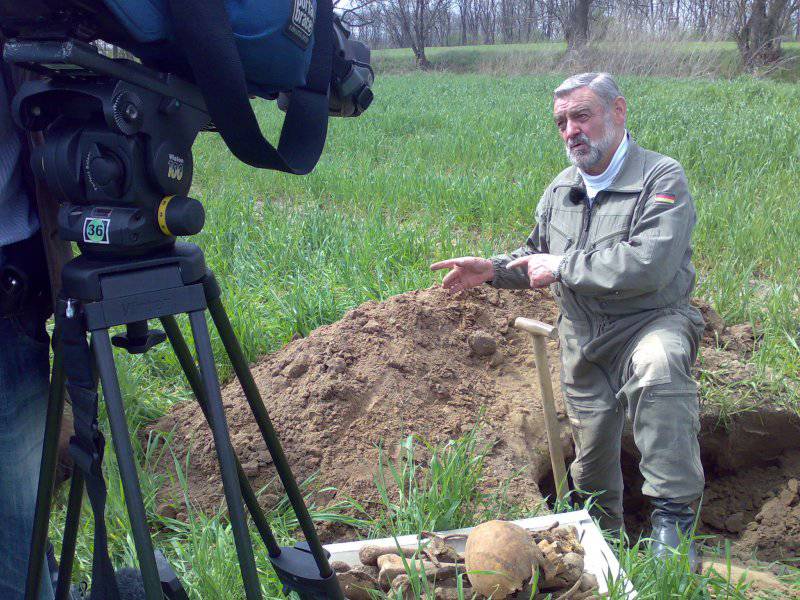
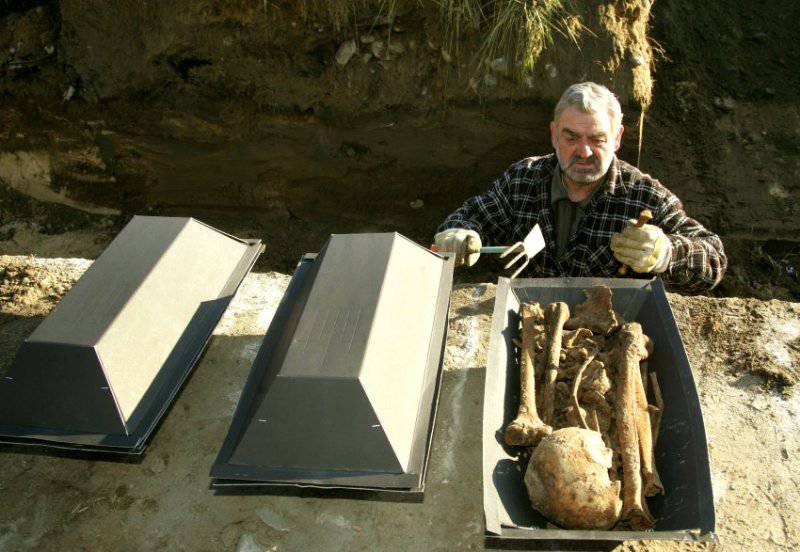
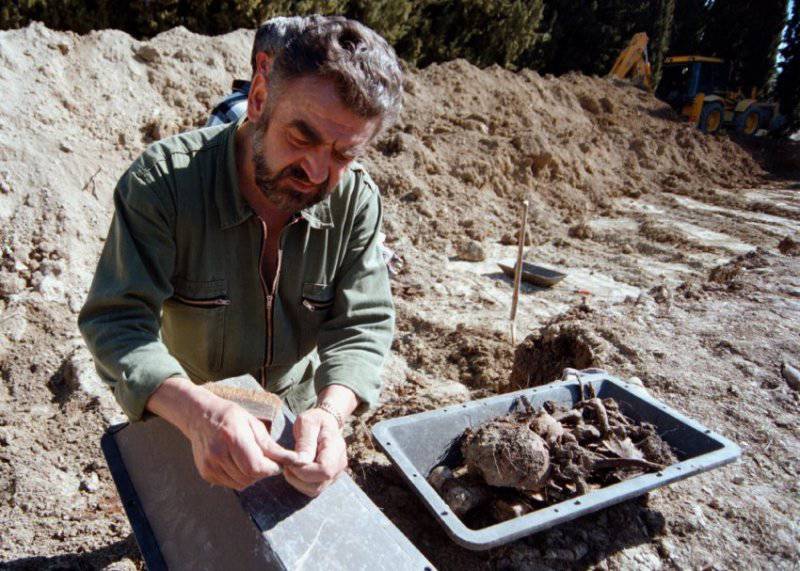
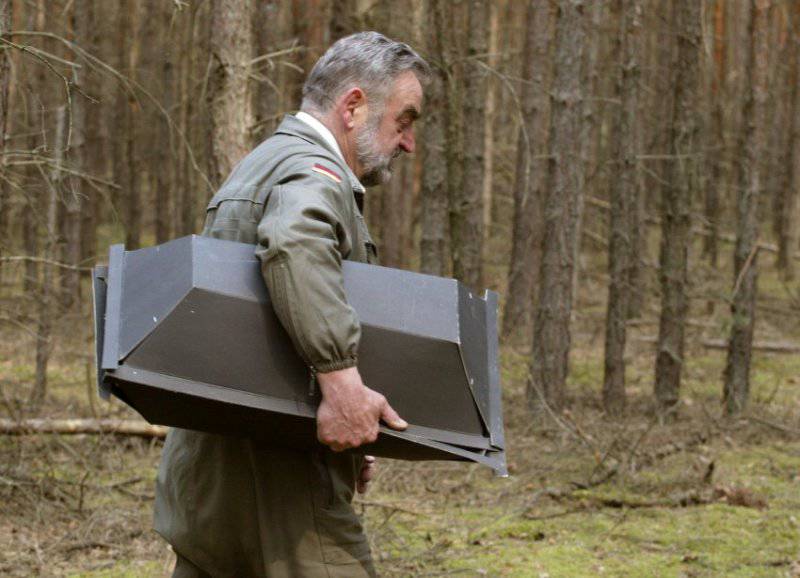
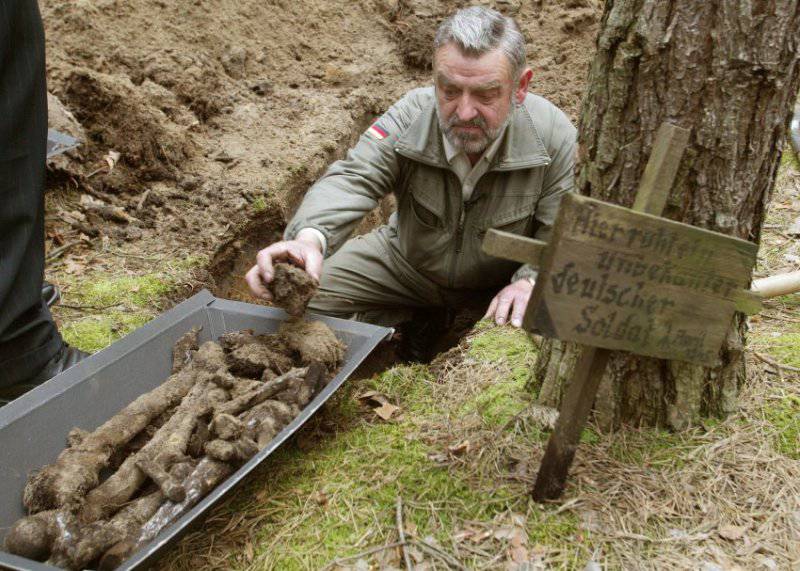
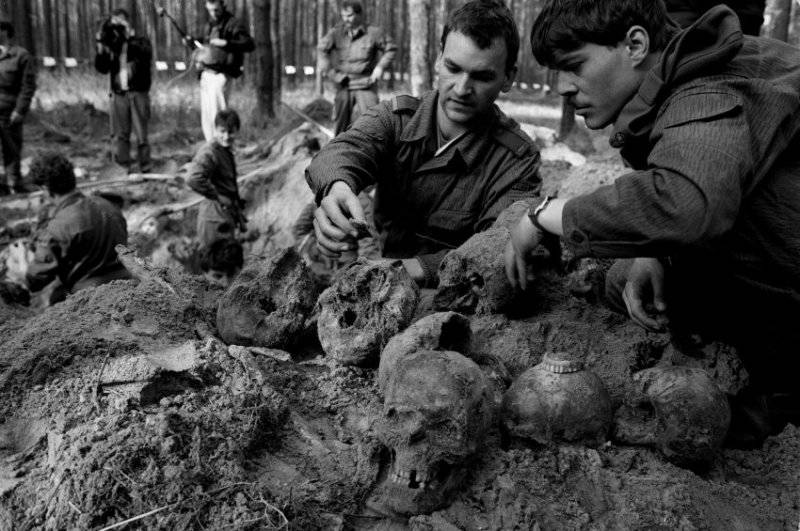
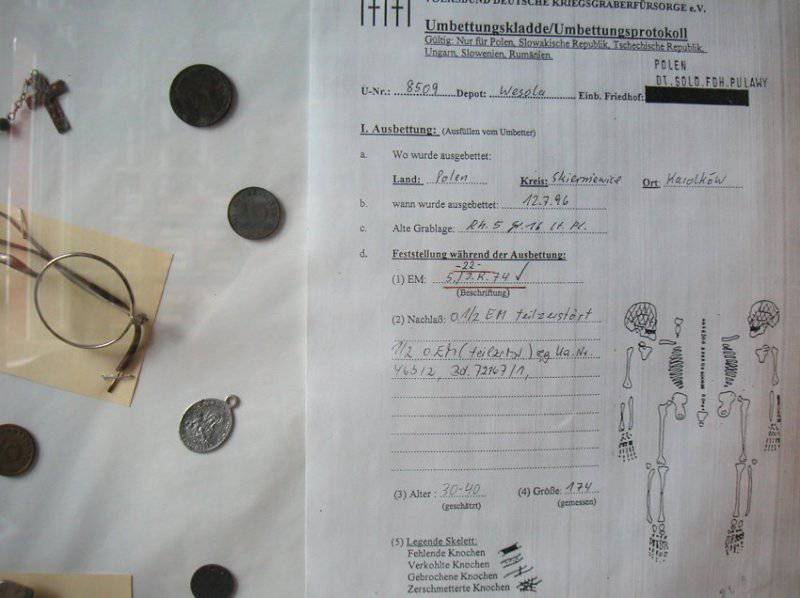
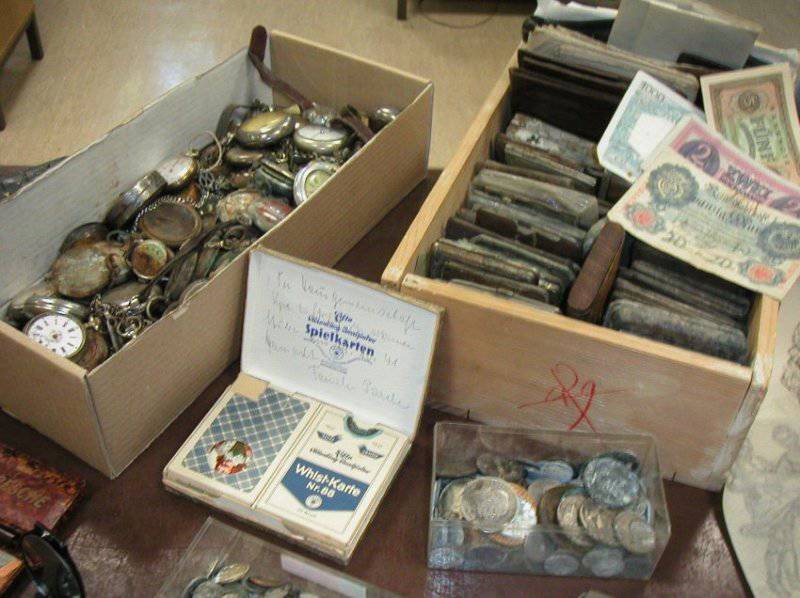
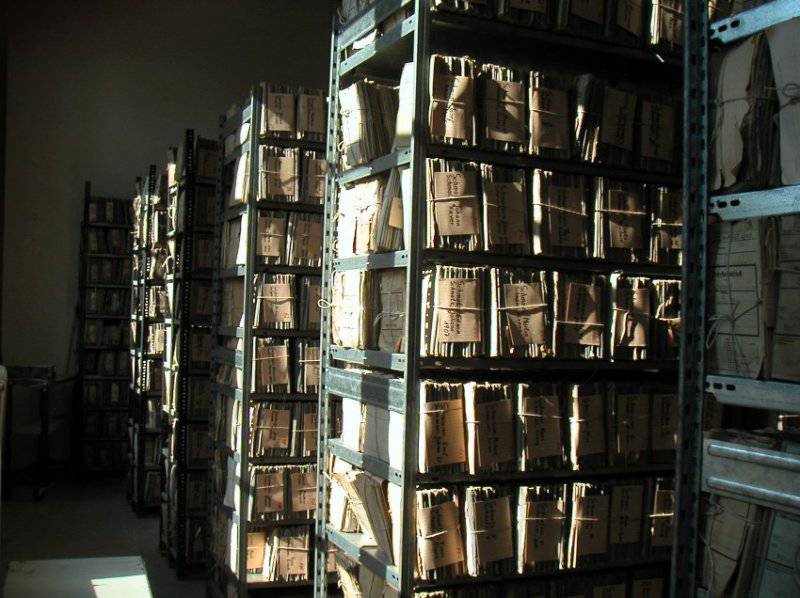
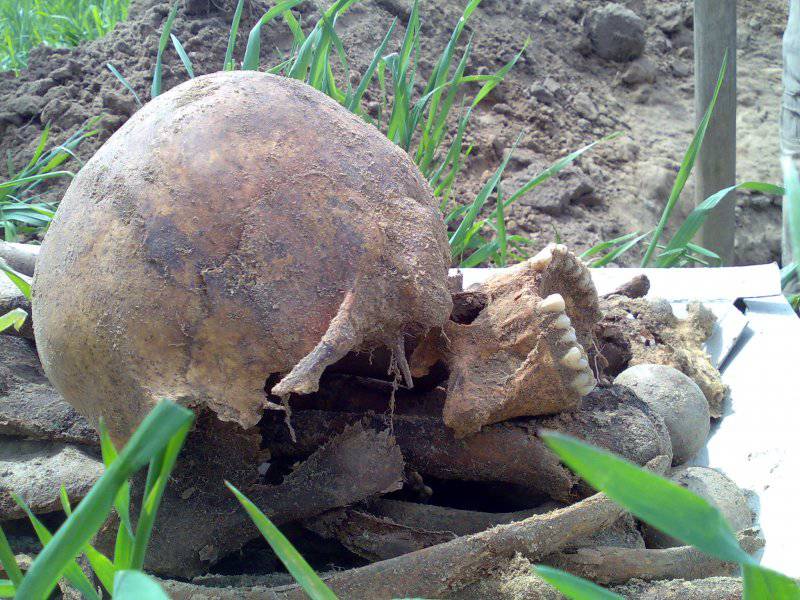
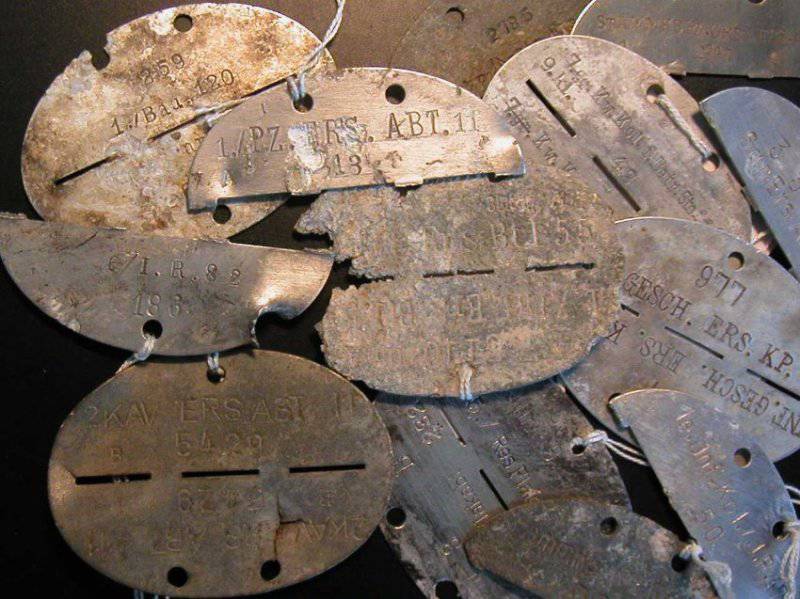
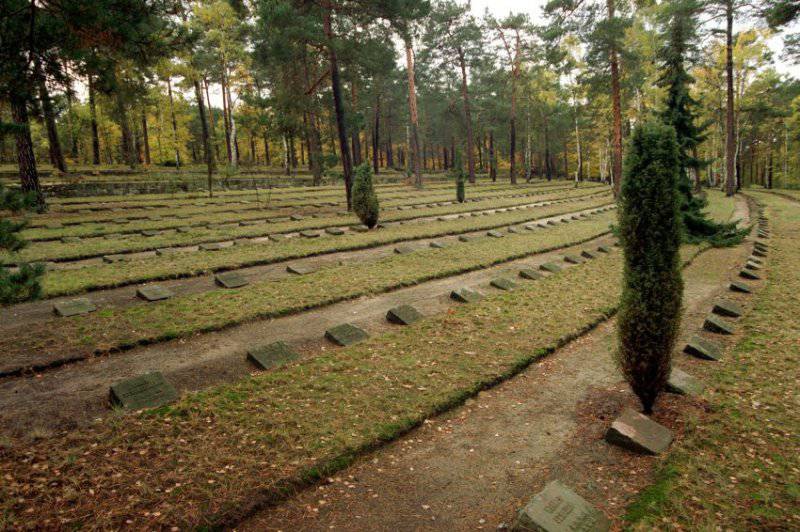
Information